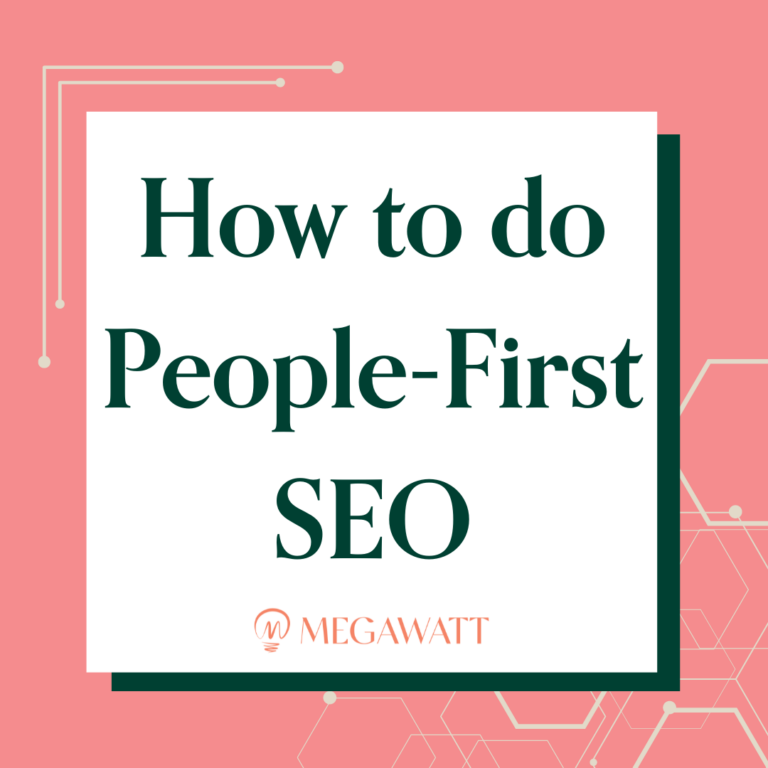Tips for building SEO strategy around low search volume keywords
So your organization has a new product or service that you’re excited to launch.
You may also be a new company in an emerging market, or one planning to enter a high-traffic market space and wondering how your website will compete with established organizations, ones that have higher domain authorities and extensive libraries of SEO-focused content.
Whatever your situation, you’ve started to think about content marketing and SEO. Nowadays, it isn’t enough to write a blog post and pray to the Google gods that it ranks well. Instead, you need to employ a well-thought-out SEO strategy to reach your targeted audience.
If your SEO research is only returning low search volume or zero search volume keywords — keywords that aren’t being searched often (or at all) on Google — you may be wondering how to structure your content around them or if it’s worthwhile to do so.
After all, the goal is to get your content before an audience, and it seems counterintuitive to focus on keywords that no one seems to be searching. Or is it?
Low search volume keywords (and even zero search volume ones), if approached correctly, can actually be an opportunity to attract more targeted traffic to your site. They can help you build credibility in an emerging market that will soon see a boost in search volume.
Wondering how to harness the power of these often-overlooked keywords? Let’s take a look at how the algorithm has evolved to reward this strategy and tips on how to use low search volume keywords in your content.
A word on SEO strategy today and the algorithm
Over the past few decades, SEO strategy has evolved beyond the keyword stuffing that plagued much of the content produced before 2003. That’s when Google rolled out the Florida update, which demoted sites using spammy tactics like:
- Keyword stuffing
- Invisible text
- Hidden links
- Misused keywords
Now, SEO strategy for your content should be people-first, which means you’re writing for your audience, not the algorithm. This is good news! These changes allow for well-written content from sites that may not be as visible as others in general searches to rank well for specific pieces.
SEO strategy is still necessary, however, even though algorithm changes reward people-first content. After all, Google continues to use keywords to understand what your content is about and what potential questions it answers. And humans continue to use Google to search for specific types of content. Let’s look at a few ways you can leverage low search volume and zero search volume keywords in your content.
You might also like: Why B2B Content Distribution Is More Effective Than Promotion
How to build your SEO strategy around low search volume keywords and zero search volume keywords
1. Focus on producing high-quality content
In 2022, Google introduced their helpful content update. This update rewards content that provides a satisfying visitor experience and penalizes content that doesn’t meet visitor expectations.
So what does this mean for the blog or webpage you’re creating for your product or service? Focus on drafting copy that has:
- Clear sourcing.
- Evidence of expertise.
- No spelling or grammatical issues.
- Whenever possible, first-hand experience to demonstrate a depth of knowledge (e.g., customer reviews or case studies).
It may be tempting to choose higher-volume, less-specific keywords/keyphrases that aren’t really relevant to your product or service in an effort to get your niche product/service in front of a wider audience. However, ultimately this “catfishing” will probably negatively impact user experience and result in the algorithm penalizing your content.
For example, let’s say your company is introducing a new cloud-based data security solution. “Cloud-based data security” is currently a zero search volume keyphrase on Semrush. This doesn’t mean you should pivot and structure your piece around less-specific keywords with higher search volumes like “cloud security,” (current Semrush KV of 8.1K). In a case like this, targeting the zero search volume keyphrase better matches the search intent (we’ll cover this in-depth in the next section).
So instead of keyword “catfishing,” focus on building quality, intent-focused content around the lower search volume/zero search volume keywords. Then, check your content against Google’s recommendations for creating people-first copy.
2. Consider search intent and funnel position
When deciding which keywords to use in a piece focused on niche/emerging products and services, you’ll want to consider search intent, or the reason why someone types a query into a search engine.
There are four broad types of search intent: navigational, informational, commercial, and transactional. These should be directly related to your marketing funnel, so identifying where a piece of content lies in the funnel (top, middle, or bottom) or buyer’s journey will help guide your keyword research.
Let’s use our cloud-based data security example again. If you’re producing a middle-of-funnel (MOFU) blog piece on the topic, then you’re targeting potential buyers in the research and evaluation phase. This syncs with commercial search intent, or research completed before making a purchase.
In this instance, the niche keywords/keyphrases should focus on more specific aspects of pricing and availability, as opposed to less specific, top-of-funnel keywords and transaction-directed, bottom-of-funnel phrases.
Here are a few sample middle-of-funnel, low search volume/zero search volume keyphrases:
- Do I need a cloud-based data security solution?
- How much should cloud-based data security cost?
- When should I implement cloud-based data security?
Each of these phrases are zero search volume keyphrases. They target potential customers who obviously know about cloud-based data security and so wouldn’t fit in the top-of-funnel or informational search intent buckets. These customers are also clearly not ready to purchase, based on questions like “Do I need this?” and so aren’t considered transactional/bottom-of-funnel users.
Knowing where a potential piece fits in your funnel and thinking about the online search terms customers will use to find it can help you choose hyper-focused, low search volume/zero search volume keywords and keyphrases.
Sign up for Dear Wattson, our weekly newsletter, where all content conundrums are answered!
3. Conduct competitor research on low search volume keywords
Unless you’re first to market with a completely new product/service (if you are, congrats!), then there are more than likely competitors in your niche or emerging market. When building an SEO strategy around low-ranking keywords or zero-volume keyphrases, some people might see there’s no traffic for the keywords they’ve selected and assume that those are the best to use in their content. The rationale here is that they’d be one of the first to build content around this topic. The Google algorithm would reward that — ranking their content higher, even as the search volume around the particular market/product/service grows.
While this is one of the reasons why organizations target low search volume keywords in the first place, it’s still important to research competitors’ keywords before committing to this strategy. Why? You may find that there are other high-volume keywords with low competition available. This is often a better place to start, though not the “end-game” by any means.
A great way to approach this: take a piece of competitor content relevant to your topic/product/service and reverse engineer it. What key phrases are they targeting in the piece? If you can, put those keywords into your SEO keyword research tool and look at keyword variations and related keywords. Are there any that stick out as high volume/low difficulty? If so you may want to consider building content around these — they’re considered low-hanging fruit in the SEO world.
Finding high-volume keywords with low competition doesn’t necessarily mean that you should completely abandon your low search volume/zero search-volume keywords, but you should consider producing people-first content around both.
4. Consider alternate KPIs as indicators of success with low search volume keywords
This is a big one. While it’s important to gather relevant data from your content to ensure it’s successful, evaluating the success of a piece of niche content built around low search volume/zero search volume keywords will look quite different than a pillar piece written on a high-search volume topic.
Consequently, it’s helpful to think of the content strategy for your niche product/service as a long game. You’re building credibility for your brand and product and general awareness of a niche industry, which takes time.
Instead of focusing on baseline numbers for overall traffic, you may want to look at more specific numbers like conversions, and the quality of leads you’re getting based on the content.
Some other KPIs to consider:
- Engagement time: tracking the average time spent on a particular page can help you understand how users interact with your content. You’ll also want to consider this in context to your industry, however, for the most accurate insights. For example, the average page time is higher for automotive sites than for consumer electronics.
- Top keywords ranked: often, in the rush of checking other metrics, people forget to track how they’re ranking for the keywords/keyphrases they’re targeting. Doing so can give you a good idea of your content’s organic search visibility and show you where you need to optimize further.
Finally, we recommend taking a look at Google Search Trends, which can give you a sense of whether keywords you’re targeting or similar ones are either increasing or decreasing in search volume. If you’re seeing an increase around similar keywords, that’s a great sign that your low- or no-volume keyword strategy makes sense.
5. Conduct a thorough content audit
While you’re building an SEO strategy around low search volume and zero search volume keywords, it’s easy to forget the existing content on your site. Why does the existing content matter? Well, your content doesn’t reside in a vacuum, which means that an individual piece of content’s ranking can be affected by what’s working (and what isn’t) on your site.
For the most up-to-date guidelines, you can view Google’s most recent algorithm recommendations. For Google, high-quality sites avoid, “duplicate, overlapping, or redundant articles on the same or similar topics with slightly different keywords.” Reviewing your content library and removing older pieces may help improve your site’s overall ranking and help newer pieces rank well.
This is key for a low search volume/zero search volume keyword strategy. If Google doesn’t see your site as “high quality,” then you may initially rank for these terms, but as they build steam and search volume increases around them, your site won’t perform as well as other, more optimized sites.
Low search volume/zero search volume keywords are a long game worth playing
Launching a new product or service into a niche or emerging category can be exciting. Considering the SEO strategy necessary to get your product in front of the right customer is often less exciting.
The process doesn’t have to be frustrating, however. While the search volume may not be there initially for your keywords/keyphrases, you’re actually building interest in your products/services AND branding your organization as an expert in that market. You’re also building a place for visitors to land when those keywords do start to take off.
With the right keyphrases, you can build the people-first content that the Google algorithm rewards. Just remember the quality of leads and conversion numbers matter just as much as — arguable more than — straight-up traffic. Balancing out your SEO strategy will help you maximize results across the board.
Interested in developing a strong SEO strategy and content?
We can help! Contact us.






